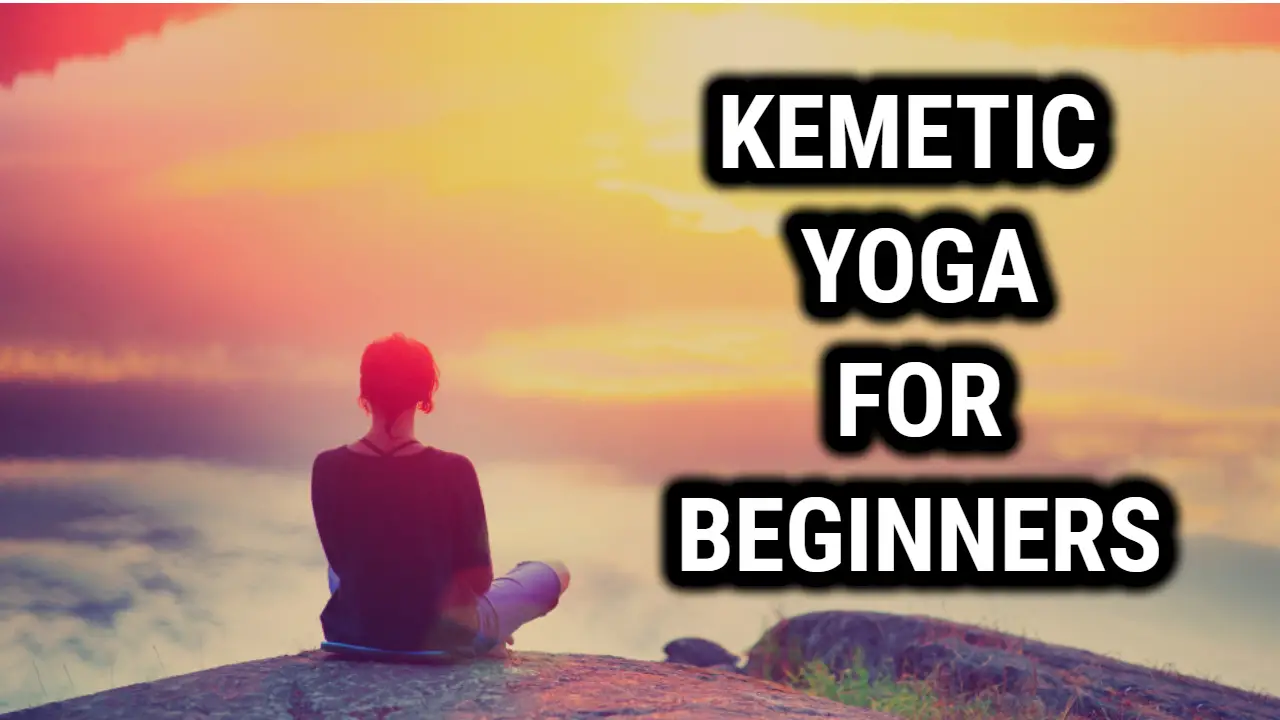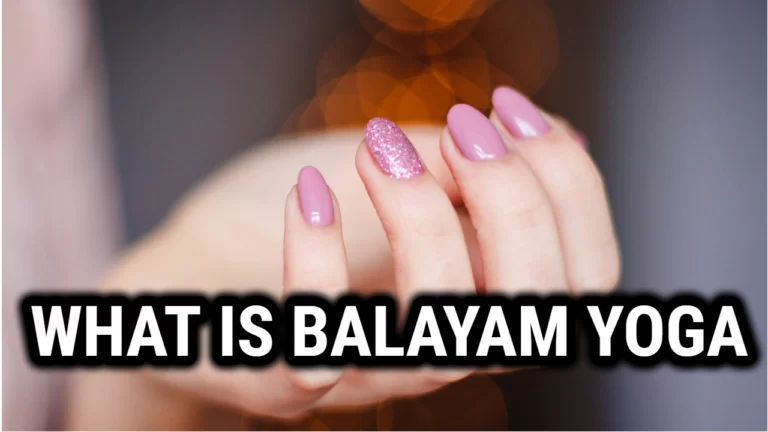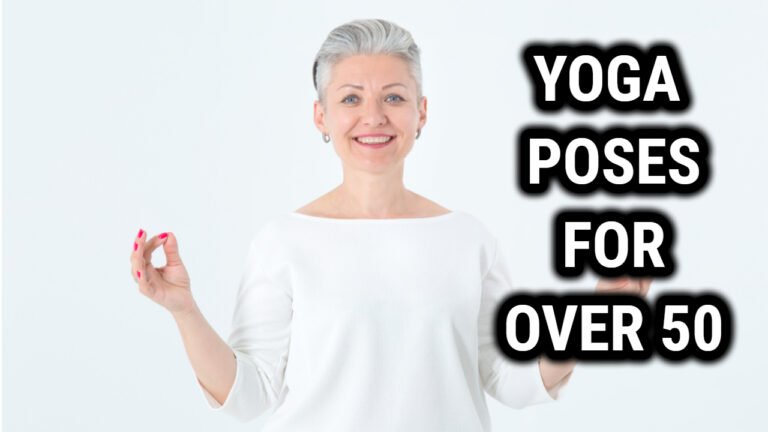Kemetic Yoga For Beginners – Reconnect with Your Inner Self

Are you looking for a way to improve your physical, mental, and spiritual health? If so, you may want to consider Kemetic Yoga. This ancient practice, which originated in ancient Egypt, is gaining popularity around the world as a holistic approach to wellness. Here, we’ll explore the basics of Kemetic Yoga, its benefits, and how to get started with this powerful practice.
Key Takeaways
| Takeaway | Explanation |
|---|---|
| Kemetic Yoga draws on ancient Egyptian traditions | This practice incorporates movements, breathwork, and spiritual principles to improve physical, mental, and spiritual health. |
| Anyone can practice Kemetic Yoga | The practice is accessible to people of all ages and fitness levels, and modifications can be made to accommodate individual needs and abilities. |
| Kemetic Yoga has numerous benefits | These include improved flexibility, strength, balance, posture, as well as reduced stress, anxiety, and depression. |
| No special equipment is needed | While comfortable clothing and a non-slip surface are recommended, no special equipment is required. |
| Consult with a healthcare provider | If you have a physical injury or condition, it’s important to speak with your healthcare provider before starting any new exercise program. |
| Find a certified Kemetic Yoga teacher | To learn more about Kemetic Yoga and receive personalized instruction, consider finding a certified teacher through online or social media searches. |
What is Kemetic Yoga?
Kemetic Yoga, also known as Smai Tawi or Egyptian Yoga, is a practice that combines physical movements, breathwork, meditation, and spiritual principles. It is based on the ancient Egyptian philosophy of Ma’at, which emphasizes balance, harmony, and truth. Kemetic Yoga is rooted in the idea that the body, mind, and spirit are interconnected and that by cultivating awareness and alignment in these areas, we can achieve optimal health and well-being.
Benefits of Kemetic Yoga
Kemetic Yoga offers a wide range of benefits for practitioners of all ages and fitness levels. Some of the most notable benefits include:
- Improved flexibility and strength
- Reduced stress and anxiety
- Increased energy and vitality
- Improved digestion and circulation
- Enhanced immune function
- Heightened awareness and mindfulness
- Improved sleep and relaxation
Basic Principles of Kemetic Yoga
To understand Kemetic Yoga, it’s important to be familiar with some of its foundational principles. These include:
Ma’at Philosophy
Ma’at is an ancient Egyptian concept that refers to balance, harmony, and truth. It is considered the foundation of Kemetic Yoga and is incorporated into every aspect of the practice. The philosophy of Ma’at emphasizes the importance of living in alignment with natural laws and universal principles.
The 7 Chakras
The 7 Chakras are energy centers in the body that correspond to different aspects of our physical, emotional, and spiritual health. In Kemetic Yoga, the Chakras are aligned and balanced through movement, breathwork, and meditation.
The 11 Laws of God
The 11 Laws of God are a set of principles that guide practitioners in their pursuit of spiritual growth and enlightenment. These laws include concepts such as truth, justice, righteousness, and love.
Preparing for Kemetic Yoga
Before you begin practicing Kemetic Yoga, it’s important to take some time to prepare yourself and your environment. Here are a few tips to help you get started:
Finding a Teacher
While it is possible to learn Kemetic Yoga on your own, it is highly recommended that you seek out a qualified teacher. A good teacher can help you learn proper form, alignment, and breathing techniques, as well as guide you in your spiritual practice.
Creating a Sacred Space
Creating a sacred space for your practice can help you cultivate a peaceful and focused mindset. This can be as simple as designating a specific area in your home for your practice, or as elaborate as creating an altar with sacred objects and symbols.
Choosing the Right Attire
Wearing loose, comfortable clothing can help you move freely and breathe deeply during your practice. Avoid wearing anything too tight or restrictive.
Proper Diet and Hydration
Eating a healthy, balanced diet and staying hydrated is essential for optimal physical and mental health. Make sure to eat a nutritious meal and drink plenty of water before your practice.
Kemetic Yoga Poses for Beginners
Kemetic Yoga incorporates a wide range of poses and movements, many of which are based on ancient Egyptian symbolism and mythology. Here are a few beginner-friendly poses to get you started:
The Kemetic Tree Pose
The Kemetic Tree Pose is a standing pose that represents the energy of the universe flowing through the body. To practice this pose, stand with your feet hip-width apart and your arms by your sides. Take a deep breath in and raise your arms overhead, bringing your palms together. Slowly raise your left leg and place the sole of your foot against your inner thigh. Hold this pose for a few breaths before switching sides.
The Sphinx Pose
The Sphinx Pose is a gentle backbend that stretches the spine and opens the chest. To practice this pose, lie on your stomach with your forearms resting on the ground and your elbows directly under your shoulders. Gently lift your chest and head off the ground while keeping your shoulders relaxed. Hold this pose for a few breaths before releasing.
The Anpu Pose
The Anpu Pose, also known as the Downward-Facing Dog, is a classic yoga pose that stretches the hamstrings, calves, and spine. To practice this pose, start on your hands and knees with your hands shoulder-width apart and your knees hip-width apart. Lift your hips up and back, straightening your arms and legs to form an inverted V shape. Hold this pose for a few breaths before releasing.
Breathwork in Kemetic Yoga
Breathwork, or Pranayama, is an essential component of Kemetic Yoga. By focusing on the breath, practitioners can calm the mind, increase energy, and improve overall health. Here are a few simple breathing exercises to try:
Ujjayi Breath
Ujjayi Breath, also known as Ocean Breath, is a slow, deep breathing technique that helps to calm the mind and reduce stress. To practice this breath, inhale deeply through your nose while constricting the back of your throat. Exhale slowly through your nose while keeping the throat constricted. Repeat for several cycles.
Nadi Shodhana Pranayama
Nadi Shodhana Pranayama, also known as Alternate Nostril Breathing, is a breathing technique that helps to balance the left and right sides of the brain, as well as improve focus and concentration. To practice this breath, sit comfortably and place your right thumb over your right nostril. Inhale deeply through your left nostril. At the top of your inhale, close your left nostril with your ring finger and exhale through your right nostril. Inhale through your right nostril, then close it with your thumb and exhale through your left nostril. Repeat for several cycles.
Frequently Asked Questions (FAQ)
What is Kemetic Yoga?
Kemetic Yoga is a practice that draws on ancient Egyptian spiritual and physical traditions to create a holistic approach to wellness. It incorporates movement, breathwork, meditation, and spiritual principles to improve physical, mental, and spiritual health.
Do I need to be flexible to practice Kemetic Yoga?
No, you do not need to be flexible to practice Kemetic Yoga. The practice is accessible to people of all ages and fitness levels, and modifications can be made to accommodate individual needs and abilities.
What are the benefits of Kemetic Yoga?
Kemetic Yoga has numerous benefits, including improved flexibility, strength, balance, and posture. It can also reduce stress, anxiety, and depression, as well as improve focus, concentration, and overall well-being.
Do I need any special equipment to practice Kemetic Yoga?
No, you do not need any special equipment to practice Kemetic Yoga. However, it is recommended to wear comfortable, breathable clothing and to practice on a non-slip surface, such as a yoga mat.
Can I practice Kemetic Yoga if I have a physical injury or condition?
Yes, you can practice Kemetic Yoga if you have a physical injury or condition. However, it is important to consult with a healthcare provider before beginning any new exercise program and to inform your instructor of any injuries or conditions so that modifications can be made as needed.
How can I find a Kemetic Yoga teacher?
You can find a Kemetic Yoga teacher by searching online or through social media. There are also Kemetic Yoga teacher training programs available for those interested in becoming certified instructors.
Conclusion
Kemetic Yoga is a powerful practice that can help to improve your physical, mental, and spiritual health. By incorporating movement, breathwork, and spiritual principles, this ancient practice offers a holistic approach to wellness that is accessible to practitioners of all ages and fitness levels.
Whether you’re looking to reduce stress, increase flexibility, or deepen your spiritual practice, Kemetic Yoga is a valuable tool that can help you achieve your goals. So why not give it a try? With a little practice and patience, you may find that Kemetic Yoga is exactly what you need to take your health and well-being to the next level.






